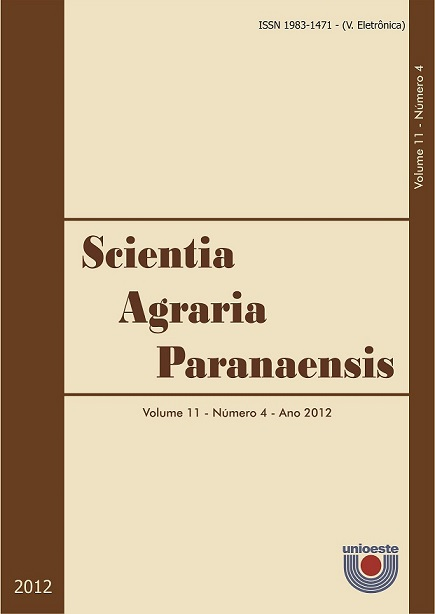Peanut ecophysiology
DOI:
https://doi.org/10.18188/sap.v11i4.6033Keywords:
Arachys hypogaea L., fatores ecológicos, fenologiaAbstract
The peanut is the fourth most grown oilseed in the world. Grown in tropical regions in the wide range of latitude between 30 ° N and S in temperate countries like the United States. The climate needs depends on the stage of development of culture. Plants have indeterminate growth habit, occurring at the same time vegetative and reproductive development. At the beginning of the flowering, the demand for nutritional and environmental conditions is high, because many events are occurring in the plant, such as production of leaves, flowers, roots, pegs, pegs penetration in the soil and the pods development. The climatic and nutritional needs must be met during the cycle. However, from the beginning of the flowering, the peanut crop has a high nutrient demand, and to achieve high yields it is necessary that the environmental conditions, nutrient supply and management are adequate. The plant is not influenced by photoperiod and the light is not limiting factor. The time of sowing is one of the main factors responsible for getting the climate demands of the plants.Downloads
Additional Files
Published
04-03-2013
How to Cite
FERRARI NETO, J.; COSTA, C. H. M. da; CASTRO, G. S. A. Peanut ecophysiology. Scientia Agraria Paranaensis, [S. l.], v. 11, n. 4, p. 01–13, 2013. DOI: 10.18188/sap.v11i4.6033. Disponível em: https://e-revista.unioeste.br/index.php/scientiaagraria/article/view/6033. Acesso em: 16 jun. 2025.
Issue
Section
Revisões Bibliográficas
License
Aviso de Direito Autoral Creative Commons
Política para Periódicos de Acesso Livre
Autores que publicam nesta revista concordam com os seguintes termos:
1. Autores mantém os direitos autorais e concedem à revista o direito de primeira publicação, com o trabalho simultaneamente licenciado sob a Licença Creative Commons Attribution que permite o compartilhamento do trabalho com reconhecimento da autoria e publicação inicial nesta revista.2. Autores têm autorização para assumir contratos adicionais separadamente, para distribuição não-exclusiva da versão do trabalho publicada nesta revista (ex.: publicar em repositório institucional ou como capítulo de livro), com reconhecimento de autoria e publicação inicial nesta revista.
3. Autores têm permissão e são estimulados a publicar e distribuir seu trabalho online (ex.: em repositórios institucionais ou na sua página pessoal) a qualquer ponto antes ou durante o processo editorial, já que isso pode gerar alterações produtivas, bem como aumentar o impacto e a citação do trabalho publicado (Veja O Efeito do Acesso Livre).
Licença Creative Commons
Esta obra está licenciada com uma Licença Creative Commons Atribuição-NãoComercial-CompartilhaIgual 4.0 Internacional, o que permite compartilhar, copiar, distribuir, exibir, reproduzir, a totalidade ou partes desde que não tenha objetivo comercial e sejam citados os autores e a fonte.


